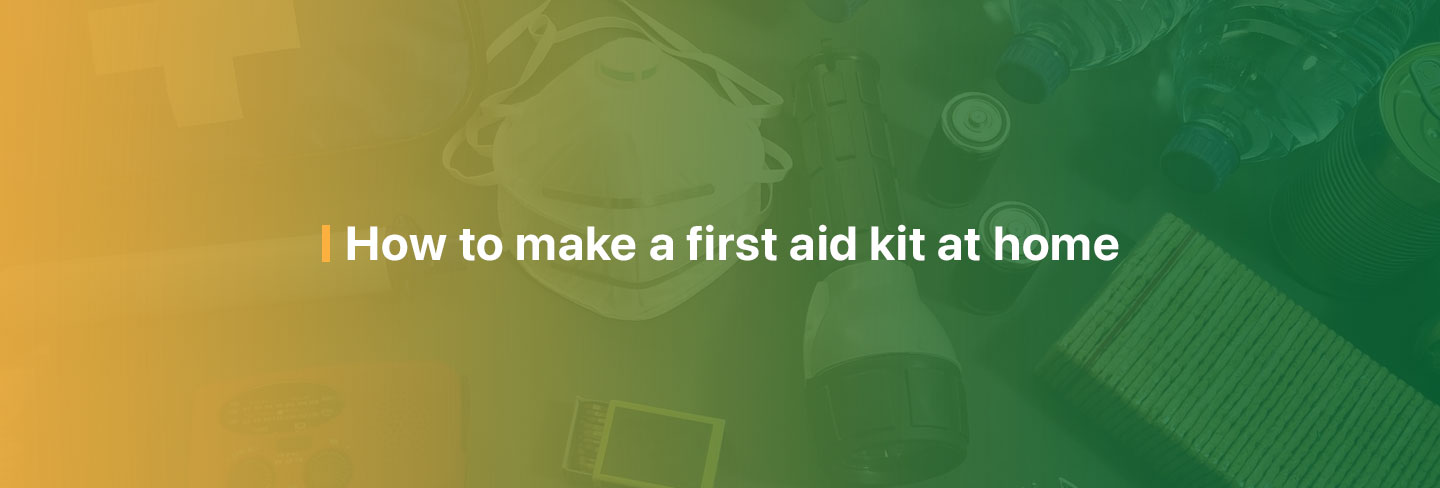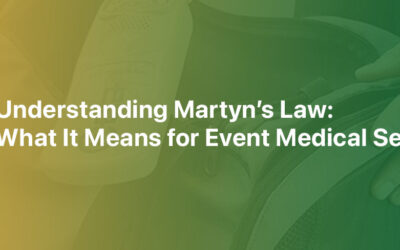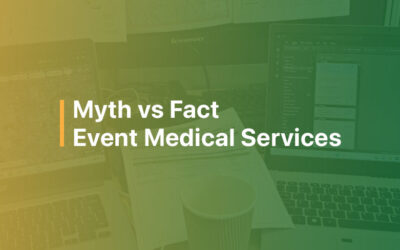Be Prepared, Not Scared
Don’t worry, accidents happen, and they often occur when we least expect them. Accidentally spilling a cup of tea, falling down the stairs, or a minor kitchen mishap — these everyday incidents can quickly escalate into painful injuries if not addressed promptly. In the UK, accidents at home account for a staggering number of hospital admissions each year. According to the Royal Society for the Prevention of Accidents (RoSPA), there were an estimated 6,000 fatal accidents in the home during 2020/21. That’s why having a well-stocked first aid kit readily available is crucial for every household.
Having a first aid kit empowers you to take immediate action, providing essential care before professional medical help arrives. From minor cuts and scrapes to more serious injuries, a first aid kit equips you with the tools to manage various situations, potentially preventing complications and promoting faster healing.
In this comprehensive guide, we’ll walk you through the process of creating a first aid kit tailored to your home’s specific needs. We’ll cover everything from essential supplies to first aid basics, empowering you to confidently respond to any unexpected health event.
Remember: While a first aid kit is an invaluable resource, it’s no substitute for professional medical advice. Always seek help from a healthcare professional or emergency services in case of serious injuries or concerns.
The First Aid Reality At Home
It’s easy for most of us to assume that our homes are safe havens, but the statistics paint a different picture. Accidents within the familiar walls of our houses are more common than we might think. In fact, according to the NHS, accidents and injuries are the most common cause of death in children aged 1-14 in the UK. Every year, thousands of people suffer injuries severe enough to require hospital treatment following accidents in their own homes.
Falls, burns, cuts, and poisoning are just a few examples of the hazards that lurk within our living spaces. The elderly and young children are particularly vulnerable to household accidents, but anyone can be at risk.
Understanding the prevalence of these incidents underscores the importance of being prepared. A well-equipped first aid kit can make all the difference in those crucial moments following an accident, allowing you to provide immediate care and potentially prevent further complications.
For more information on how to prevent accidents at home, consider exploring our resources on safety training.
5 Essential Items You Need In Your Home First Aid Kit
Building a first aid kit doesn’t require a medical degree, but it does call for a careful selection of essentials that can address a range of common injuries. Here’s a breakdown of the must-have items:
- Adhesive Bandages (Plasters) in Various Sizes:
These versatile bandages are perfect for covering minor cuts, scrapes, and blisters. Make sure to include a variety of sizes to accommodate different wounds.
Adhesive Bandages are available at various shops such as Boots
- Sterile Gauze Pads and Rolls:
Gauze pads are ideal for cleaning and covering larger wounds, while gauze rolls can be used to secure dressings in place or provide support for sprains and strains.
Sterile Gauze Pads & Rolls are available at various shops such as Boots
- Antiseptic Wipes:
Antiseptic wipes help clean wounds and prevent infection, while antibiotic ointment provides an additional layer of protection against bacteria.
Medical Tape is purchasable via various retailers such as Boots
- Pain Relievers (e.g., Paracetamol or Ibuprofen):
Over-the-counter pain relievers can help manage mild to moderate pain and reduce fever associated with injuries or illnesses.
Select from a variety of pain relievers from online retailer Boots
- Disposable Gloves
Wearing disposable gloves protects both the injured person and the first aider from infection and contamination.
Disposable gloves are available to purchase online via Boots.
Remember, this is just a basic list. Depending on your household’s specific needs and circumstances, you may want to include additional items in your first aid kit.
Beyond Basic | Additional First Aid Equipment
While the essential items provide a solid foundation, a truly comprehensive first aid kit goes beyond the basics, catering to the unique needs and circumstances of your household.
Consider these additional items to enhance your readiness:
Medications for specific allergies or chronic conditions:
If any household members have allergies or chronic conditions, ensure your first aid kit includes their necessary medications and any emergency supplies, such as an EpiPen for severe allergic reactions or an inhaler for asthma.
It’s essential to keep these medications up-to-date and readily available in your kit.
Child-specific supplies:
For households with young children, consider adding child-friendly bandages, pain relievers formulated for children, and a thermometer designed for infants or toddlers.
You may also want to include items to address common childhood ailments, such as teething gel or antihistamines for mild allergic reactions.
Supplies for outdoor enthusiasts:
If your family enjoys outdoor activities like hiking, camping, or sports, consider adding items like blister plasters, insect repellent, sunscreen, and a basic snake bite kit.
These additions can help address minor injuries and discomforts commonly encountered in the great outdoors.
Emergency preparedness items:
Depending on your location and potential risks, you may want to include items like a whistle, a torch, emergency blankets, and a hand-crank radio.
These items can be invaluable in emergency situations where power outages or communication disruptions may occur.
Personal protective equipment (PPE):
Include additional PPE such as face masks and eye protection to safeguard yourself and others when administering first aid.
This is especially important when dealing with bodily fluids or potential respiratory infections.
Note that the goal of creating a personalised home first aid kit is to empower you to respond effectively to a variety of medical situations. Regularly check the contents of the kit and adjust it depending on your household needs.
By taking just 5-10 minutes of your day to check your home first aid kit, you’ll be better prepared to handle any health challenges that may occur.
Keeping Your First Aid Kit Ready For Action
While the basic items create a solid foundation, a truly prepared home needs a first aid kit tailored to its unique occupants and activities.
For households with young children, include child-friendly bandages, medications suitable for their age, and items like teething gel.
If you have family members with allergies or chronic conditions, stock their essential medications and emergency supplies.
Outdoor enthusiasts should add blister plasters, insect repellent, and sunscreen to their kit.
For added preparedness, consider emergency items like a whistle, torch, and blankets, especially if you live in a remote area.
And finally, don’t forget about personal protective equipment like gloves and face masks to ensure safety for both the caregiver and the injured person.
First Aid Best Practices
Even with the best preventative measures, accidents can still happen. Equipping yourself with basic first-aid knowledge can make a significant difference in those critical moments. Here’s a quick guide to handling some common household injuries:
- Cuts and Scrapes:
- Clean the wound: Wash the area with mild soap and water.
- Control bleeding: Apply gentle pressure with a clean cloth or gauze pad.
- Apply an antiseptic: Use an antiseptic wipe or ointment to prevent infection.
- Cover the wound: Apply a bandage or plaster to protect the area.
- Burns:
- Cool the burn: Run cool water over the affected area for at least 10 minutes.
- Cover loosely: Apply a sterile, non-stick dressing.
- Seek medical advice: For severe burns, seek professional medical attention immediately.
- Sprains and Strains:
- Rest: Avoid putting weight on the injured area.
- Ice: Apply an ice pack wrapped in a cloth to reduce swelling.
- Compression: Use a bandage to provide support and compression.
- Elevation: Raise the injured area above heart level to minimize swelling.
- Nosebleeds:
- Lean forward: Sit upright and lean slightly forward to prevent blood from running down the throat.
- Pinch the nose: Gently pinch the soft part of the nose just below the bridge for 10-15 minutes.
- Seek medical advice: If bleeding persists or is severe, seek medical attention.
- Insect Stings and Bites:
- Remove the stinger: If present, carefully remove the stinger with tweezers.
- Wash the area: Clean the area with soap and water.
- Apply a cold compress: To reduce swelling and itching.
- Seek medical advice: If there are signs of an allergic reaction, such as difficulty breathing or swelling of the face or throat, seek immediate medical attention.
Remember, these are just basic first-aid procedures. For comprehensive training and guidance, consider enrolling in our First Aid Training courses in Norfolk or our Online First Aid Training.
For further information and detailed first aid advice, you can also consult the following resources:
When Should You Seek Professional Medical Help
While a first aid kit allows you to handle minor injuries, it’s crucial to recognise when a situation demands professional medical attention. Never hesitate to call 999 or visit your nearest A&E department if you encounter any of the following:
- Severe Bleeding: If bleeding is profuse, uncontrollable, or spurting, seek immediate medical help.
- Difficulty Breathing: Shortness of breath, wheezing, or gasping for air can indicate a serious respiratory issue.
- Loss of Consciousness: If someone loses consciousness, even briefly, it warrants immediate medical evaluation.
- Chest Pain or Pressure: This could be a sign of a heart attack and requires urgent medical attention.
- Severe Abdominal Pain: Intense or persistent abdominal pain could indicate a serious internal injury or condition.
- Signs of a Stroke: These include sudden numbness or weakness on one side of the body, slurred speech, confusion, or severe headache.
- Head Injuries: If someone experiences a head injury and exhibits symptoms like vomiting, confusion, or seizures, seek immediate medical help.
- Major Burns: Burns that are large, deep, or affect the face, hands, feet, or genitals require professional medical care.
- Suspected Fractures or Dislocations: If a bone appears deformed or a joint is out of place, seek medical attention for proper diagnosis and treatment.
- Animal Bites: Animal bites can carry the risk of rabies or other infections and should be evaluated by a healthcare professional.
Remember, when in doubt, err on the side of caution and seek professional help. It’s always better to be safe than sorry when it comes to your health and the well-being of your loved ones.
A well-equipped first aid kit is an essential tool for every home
A well-equipped first aid kit is an essential tool for every home, providing the ability to respond effectively to unexpected injuries and emergencies. By following this guide, you can create a personalized kit that caters to your household’s unique needs and empowers you to provide immediate care when it matters most.
Remember, first aid knowledge is just as important as the supplies themselves. Consider enrolling in one of our First Aid Training courses to gain the confidence and skills to handle a variety of medical situations. Our courses are available both in-person in Norfolk and online, making it convenient for everyone to learn.
Don’t wait for an accident to happen. Take action today and assemble your first aid kit. It’s a small investment that can make a big difference in protecting your loved ones and ensuring their well-being.
Further Resources:
- Explore our First Aid Training courses to enhance your skills and knowledge.
- Learn more about our comprehensive Event Medical Services to ensure safety at your next gathering.
- Stay informed about health and safety tips by visiting our blog.
Remember, readiness is key. We hope these situations never occur at home, however, you’ll feel comfortable knowing that if they do, you’re able to swiftly act.




